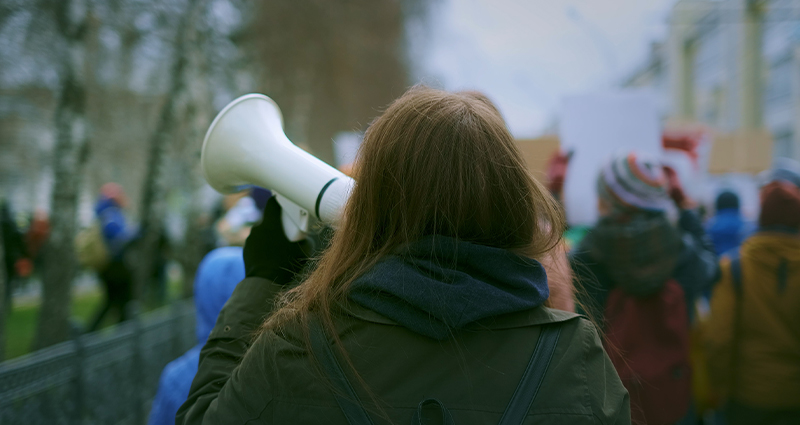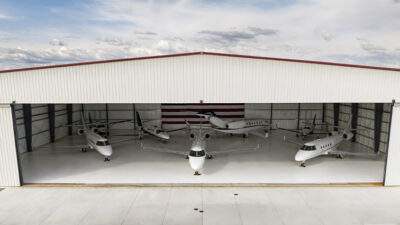Preparedness and Protocols for Encountering Protests and Demonstrations

Civil unrest, workforce strikes and political demonstrations present unique safety elements for our global mobile aviation industry. Business aviation, despite a very low collective carbon footprint and many significant contributions to green energy initiatives, is unfairly and increasingly targeted by protestors. Demonstrations can be very dynamic, and scenarios involving damaged aircraft, accosted passengers and crew and disruptions during sponsored events are not uncommon.
Proactively, aviation operators are seeking preparedness strategies and recommended protocols to reduce the chances for injury or damage during and after demonstrations. This article outlines examples of recent activities and offers high-level guidance on handling encounters. To formulate a defensive strategy, it may be beneficial to consider the actions displayed in recent demonstrations.
Demonstrations
In general, it appears some participants enter demonstrations with the expectation of arrest. Without careful consideration as to who gets hurt or what gets damaged, the speed, amount of disruption and emotional impact appear to be the driving motivations.
Numerous instances of disruptions, damage and “shelter-in-place” situations have been reported in the United Kingdom, Eurozone and even the United States. From a preparedness standpoint, any perceived activity or asset representing business or personal achievement and success could be a target.
Encountering a Demonstration
Demonstrator actions pose serious safety concerns to organizations and personnel. The following guidelines may assist you in navigating such encounters and the aftermath.
1. Know that you are on camera.
Demonstrators are recording their activities and seek to incite a reaction. Even with good intentions and an attempt to protect your assets, situations can quickly escalate. The victim can easily become the perceived perpetrator, so avoid interacting with participants to every extent you can.
2. Notify authorities immediately.
Whether there is an active demonstration or you suspect one is about to occur, promptly notify law enforcement. In the U.S., utilize 911 and airport emergency frequencies. Outside of the U.S., ensure you have international law enforcement contacts for your airports. Remember, your aircraft has manual emergency transmitters and radios, so use them if you are unable to reach anyone by phone.
If any type of disruptive activity occurs in flight, report the incident to the FBI. For events on the ground, report all available details on damage and perpetrators to the DHS/TSA at +1-844-TSA-FRST.
3. Keep passengers and crew in a secure area.
Shelter in the cabin for demonstration activity at or near your aircraft. Monitor the status of your crew and passengers closely and be proactive about requesting medical support. Under stress, most individuals cannot endure long durations in non-climate-controlled areas without effects to their health. Demonstrations are also mentally stressful for individuals not accustomed to confrontation. Regardless, a ground ambulance is often valuable for getting people away from active demonstrations.
4. Document the extent of the damage.
Utilize photos and videos, including any CCTV or security/surveillance videos available from FBOs, airports, etc., to document the damage to your property. Keep a copy of any reports filed with airport authorities or law enforcement.
5. Try to be patient and think critically.
Participant tactics aim to impede or halt aviation operations. Demonstrations often involve obstructing runways, tarmacs and taxiways using vehicles, chaining or gluing participants to aircraft or amassing in large groups. Attention-seeking demonstrators may also inflict damage, such as spraying brightly colored paint using a re-purposed fire extinguisher. Get as much on video (from a safe distance) as possible to aid law enforcement in their work.
6. Have your asset thoroughly inspected by maintenance and security before continuing operations.
Paint attacks have affected sensor and probe surfaces, and leftover chains and binding agents can cause damage. Mitigation steps include washing/cleaning property, applying anti-corrosion treatment as recommended by the manufacturer, etc.
Call to Action
It is encouraging that international law is beginning to address criminal activities during protests, leading to increased enforcement measures. In the meantime, aviation operators and corporate entities are eager to identify reliable strategies. Proactively thinking about scenarios and what your teams would do is essential to emergency preparedness.
Take this opportunity to review your Emergency Response Plan and ensure that protocols are in place to navigate your team through protest events and their aftermath effectively. Fireside can help with resources on international law enforcement contacts and scenario ideas for your exercises and safety meetings.
Stay safe, and keep an eye out for Fireside’s next SM4 article on another emerging safety threat, cyberattacks on aviation infrastructure and lessons learned for managing the aftermath.
 Fireside Partners Inc
Fireside Partners IncFireside Partners, Inc., is a fully integrated emergency services provider designed to provide all services and resources required to respond effectively and compassionately in a crisis situation. Dedicated to building world-class emergency response programs (ERP), Fireside instills confidence, resiliency and readiness for high-net worth and high-visibility individuals and businesses. Fireside provides a broad array of services focused on prevention and on-site support to help customers protect their most important assets: their people and their good name.
http://www.firesideteam.com/
© 2025 Fireside Partners Inc. All Rights Reserved.
Next ArticleRelated Posts

Navigating Geopolitical Uncertainty Using Business Aviation
Bigger business jets mean bigger fuel tanks, longer trips, more border crossings, and bigger wallets! With an equipment upgrade also comes the requirement for a knowledge upgrade.

Giving the Hazard Log the Attention It Deserves
Safety risk profile. Hazard log. Hazard risk register. Whatever you call it internally, one thing is clear: It is a fundamental requirement in your safety management system.

